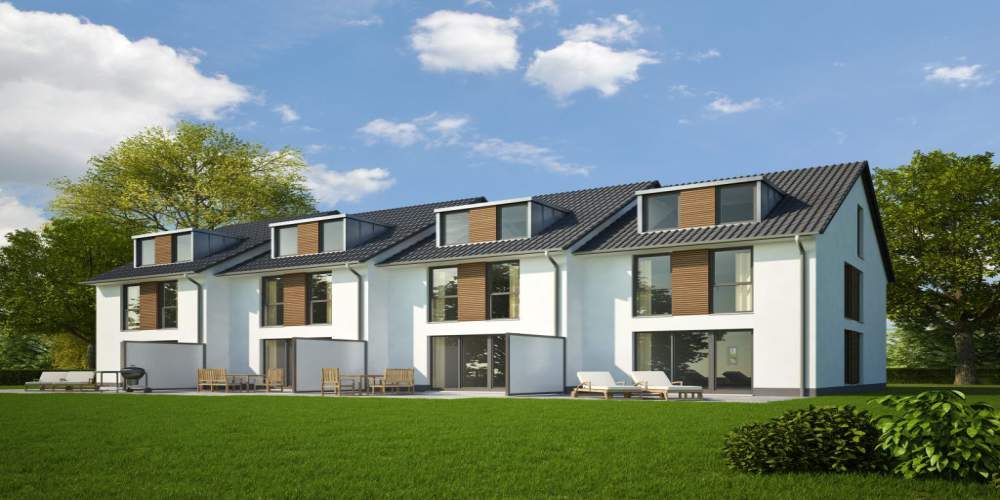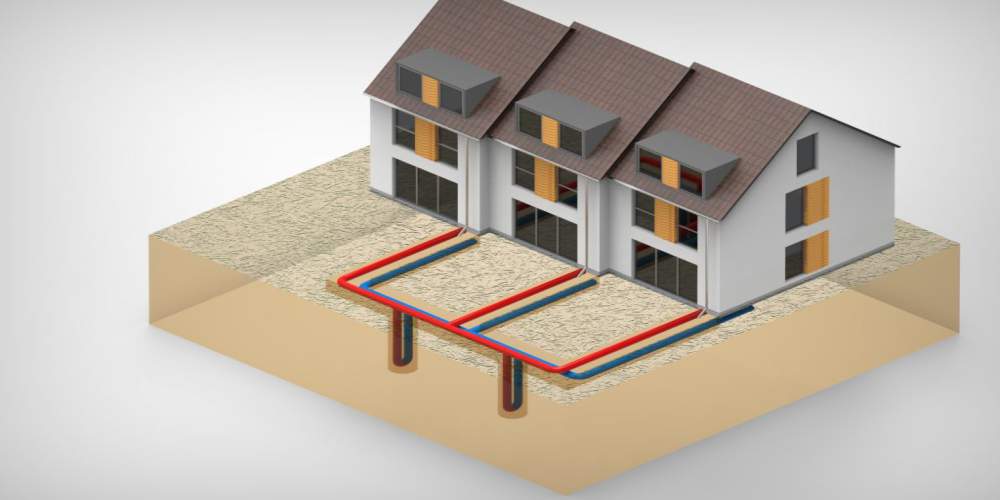In 2025 gas boilers will be banned from installation in new build properties in favour of low-carbon heating technologies such as ground source heat pumps. This piece of legislation marks a significant move by the UK government as we push forward to reach carbon net zero targets by 2050.
The government target for the number of new homes to be built each year is 300,000 – to install heat pumps in this many properties is a 20-fold increase from today’s current number of installations which stands at around 30,000 a year. So, the question is, how can the heat pump industry achieve this rate of growth in the space of just a few years?
One solution being proposed is Shared Ground Arrays, a method of installation already being rolled out by ground source heat pump specialists Thermal Earth.
COMPARE PRICES FROM LOCAL INSTALLERS
Compare prices from local companies fast & free
Enter your postcode to compare quotes from leading professionals. We promise to keep your information Safe & Secure. Privacy Policy

What are shared ground arrays?
Ground arrays or ground collectors are a network of pipes installed underground which collect energy from the earth and circulate it to a heat pump where the temperature is raised and then distributed to radiators, underfloor heating and hot water cylinders to provide heating and hot water in the home. Typically, one property has its own ground array which is sized specifically to collect enough energy for the heat demand of that particular property.
Shared ground arrays are the same principle however two or more properties can be connected to one ground array which reduces the amount of groundwork required, speeding up installation time.
Shared ground arrays are installed vertically in boreholes, the number of boreholes needed and their depth will depend on the amount of properties being connected and their required heat load. As an example one borehole at around 100 metres deep can provide enough energy for two 2 bedroom apartments.
Each property connected to a shared ground array has its own heat pump installed (typically placed in a garage, utility room, airing cupboard or even under the stairs) so that homeowners or tenants can set their preferred temperatures, heating schedules and also select an electricity tariff to power their heat pump which offers the best value for them.
Shared ground arrays will be a particularly effective solution for housing developments as properties are normally built to the same size and specification making it easier to calculate the required size of each ground collector. As the drilling team are often the first on-site, before any houses are constructed, it also means there is minimal disruption.
What the benefits of shared ground arrays?

Shared ground arrays provide many advantages, particularly for new build properties. These include:
- A long lifespan of 100+ years
- Less groundwork required
- Reduced installation time
- Decreased costs associated with ground works
- Highly efficient source of energy – ground source heat pumps produce around 3-4kWh of heat for every 1kW of electricity which is an efficiency of 300-400%
- Lower energy bills – As ground source heat pumps are so efficient, residents living in the properties can benefit from lower energy bills
- Cooling functionality – Ground source heat pumps can operate in reverse and provide Passive or Active cooling in warmer months, increasing comfort levels for residents
- Clean and carbon free – Heat pumps are powered by electricity and do not produce any on-site carbon. When a renewable electricity provider is used, the system will be 100% carbon-free
- Little maintenance required
Who will the shared ground arrays belong to?
In most cases it’s likely that ownership will be retained by the property development company. This gives the opportunity for the cost of installation to be offset by charging a monthly utility tariff to those residing in the connected properties. Developers such as Persimmon already charge a service fee to residents for the upkeep and maintenance of general areas of a development so a ground array tariff could be incorporated into this. Once the initial outlay has been recouped, this could become a new long-term revenue stream for property developers which requires little to no maintenance.
It’s also possible that the ground arrays could be sold to a utility management company who will maintain the system and charge residents a small monthly tariff.




























